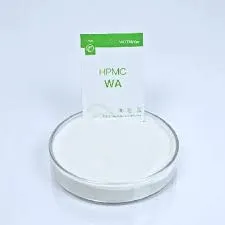
Nov . 14, 2024 03:41 Back to list
hpmc structure
Understanding HPMC Structure and Its Applications
Hydroxypropyl Methylcellulose, commonly abbreviated as HPMC, is a widely utilized cellulose ether that possesses a unique structure imparting various functional properties. Understanding its molecular architecture is crucial to appreciating its applications across diverse fields, ranging from pharmaceuticals to food products and construction materials.
Molecular Structure
HPMC is derived from cellulose, a natural polymer primarily sourced from plant cell walls. The base structure of cellulose consists of repeating units of glucose, linked together by β-1,4-glycosidic bonds. In HPMC, hydroxyl groups (-OH) of cellulose are partially substituted with hydroxypropyl and methoxy groups. This modification not only enhances the solubility of the polymer in water but also alters its thermal and rheological properties, which are critical for its diverse applications.
The degree of substitution (DS) and the molecular weight of HPMC can vary significantly depending on the manufacturing process. These factors determine its viscosity, gel formation, and solubility in different solvents. Typically, HPMC is available in various grades, catering to different requirements based on these parameters.
Properties of HPMC
The structural modifications impart specific properties to HPMC, making it an exceptional ingredient in various industries
1. Water Solubility HPMC is soluble in cold water, forming a clear gel. This characteristic is particularly beneficial in pharmaceuticals for controlled drug release and in food products as a thickening agent.
2. Thickening and Binding Due to its ability to increase viscosity, HPMC is often used as a thickener in sauces, dressings, and cosmetics. In pharmaceuticals, it acts as a binder in tablet formulations.
3. Film Formation HPMC can form flexible films on the surface of substrates. This property is exploited in coatings, both for pharmaceuticals (to control drug release) as well as in the food industry, where it can help in maintaining product freshness.
hpmc structure

4. Heat and pH Stability HPMC demonstrates stability across a wide range of pH levels and temperatures. This makes it suitable for various formulations, particularly in the production of a variety of building materials like mortars and adhesives.
Applications of HPMC
The versatility of HPMC has led to its utilization in multiple domains
1. Pharmaceuticals In the pharmaceutical industry, HPMC is used for formulating capsules, tablets, and suspensions. Its ability to control viscosity allows for the creation of sustained-release formulations, making it an essential component in the development of effective drug delivery systems.
2. Food Industry HPMC is recognized as a safe food additive and is utilized as a thickener, emulsifier, and stabilizer in food products. It helps improve texture, enhance mouthfeel, and extend shelf life, making it a preferred choice for various processed foods.
3. Construction Materials In the construction sector, HPMC is utilized to enhance the workability and performance of mortars and plasters. It provides improved adhesion, water retention, and promotes uniform consistency in cement-based applications.
4. Personal Care Products The cosmetic industry leverages HPMC for its thickening and film-forming properties in products like shampoos, lotions, and gels. Its compatibility with a variety of ingredients makes it a popular choice for formulators.
5. Agriculture HPMC is also finding its way into agriculture, used as a binding agent in the production of fertilizers and controlled-release formulations for pesticides.
Conclusion
The structure of HPMC is a prime example of how molecular modifications can lead to enhanced functionalities, making it an invaluable ingredient in many sectors. Its water-soluble, thickening, and film-forming properties, coupled with thermal and pH stability, underscore its diverse applications. As research progresses, the potential for new applications and improved formulations of HPMC continues to broaden, reaffirming its status as a crucial component in modern science and industry. Understanding this cellulose derivative's structure and properties enables innovation across various fields, promoting efficiency, sustainability, and consumer satisfaction.
-
Versatile Hpmc Uses in Different Industries
NewsJun.19,2025
-
Redispersible Powder's Role in Enhancing Durability of Construction Products
NewsJun.19,2025
-
Hydroxyethyl Cellulose Applications Driving Green Industrial Processes
NewsJun.19,2025
-
Exploring Different Redispersible Polymer Powder
NewsJun.19,2025
-
Choosing the Right Mortar Bonding Agent
NewsJun.19,2025
-
Applications and Significance of China Hpmc in Modern Industries
NewsJun.19,2025







